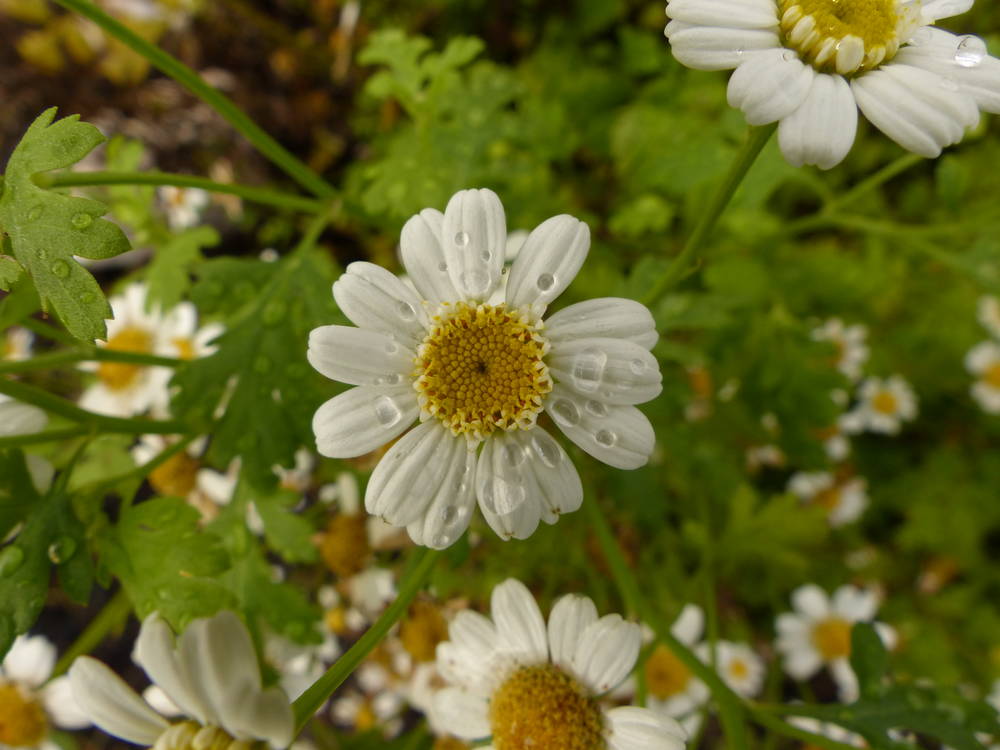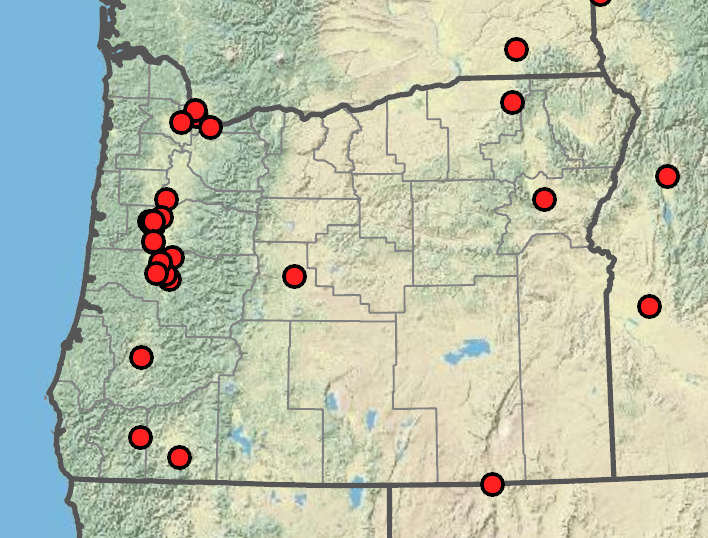Tanacetum vulgare
Tanacetum parthenium
common tansy
featherfew, feverfew
elliptic in outline, 2–25 × 2–10 cm;
margins usually denticulate, 2-pinnately lobed;
surfaces glabrous or lightly pubescent;
primary lobes in 4–10 pairs; secondary lobes linear to oblanceolate or triangular.
ovate to lanceolate in outline, 2–12 × 1–4 cm;
margins often dentate, 1–2–pinnately lobed;
surfaces glabrous or minutely pilose;
primary lobes in 2–3(4) pairs; secondary lobes ovate to oblanceolate.
3–5 × 5–10 mm.
3–3.5 × 5–12 mm.
15–25; vestigial, yellow.
10–40;
rays 3–6 mm, white.
corollas 1.5–2 mm, yellow.
corollas 1–3 mm, yellow.
with chartaceous margins; inner often membranetipped.
with chartaceous margins; inner not membranetipped.
1–2 mm, brown, 4–5-ribbed, glabrous or gland-dotted;
pappi 0 or of low crowns.
1–2 mm, brown, glabrous, 5–8-ribbed;
pappi 0 or of low crowns.
20–200;
peduncles 2–15 mm, glabrous or villous.
5–25;
peduncles 1–10 cm, glabrous or puberulent.
=18.
=18.
Tanacetum vulgare
Tanacetum parthenium
Grasslands, riverbanks, roadsides, disturbed areas. Flowering Jul–Sep. 0–1400 m. BW, Casc, CR, ECas, Sisk, WV. CA, ID, NV, WA; worldwide. Exotic.
Woodlands, riverbanks, roadsides, disturbed areas. Flowering Jun–Oct. 0–1200 m. Lava, Sisk, WV. ID, NV, WA; widely scattered in North America; worldwide. Exotic.
Kenton Chambers
Kenton Chambers
- Local floras:
BC,
CA,
OR,
WA
- Local Web sites:
CalFlora,
CalPhotos,
Flora NW,
PNW Herbaria,
Turner Photog.
WildflowerSearch
iNaturalist (observations)
USDA Plants Database
- LBJ Wildflower Center
- SEINet
- Plants of the World Online
- Encyclopedia of Life
- Wikipedia
- Google Image Search
- Local floras:
BC,
CA,
OR,
WA
- Local Web sites:
CalFlora,
CalPhotos,
Flora NW,
PNW Herbaria
WildflowerSearch
iNaturalist (observations)
USDA Plants Database
- LBJ Wildflower Center
- SEINet
- Plants of the World Online
- Encyclopedia of Life
- Wikipedia
- Google Image Search





